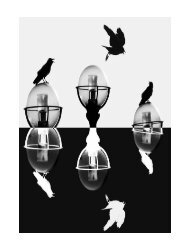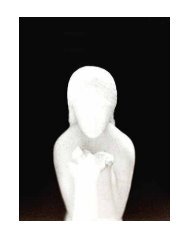Odds and Ends Essays, Blogs, Internet Discussions, Interviews and Miscellany
Collected essays, blogs, internet discussions, interviews and miscellany, from 2005 - 2020
Collected essays, blogs, internet discussions, interviews and miscellany, from 2005 - 2020
You also want an ePaper? Increase the reach of your titles
YUMPU automatically turns print PDFs into web optimized ePapers that Google loves.
line is: ‘With all her young ones hanging at her teats […]’; and Heaney comments: ‘“Hanging on” would have had
certain pathetic, anthropomorphic associations that would have weakened the objective clarity of the whole
presentation’. 8 He praises Clare for avoiding the more impressionistic phrase “hanging on” in favour of the more
visually accurate ‘hanging at’ that Clare does use. He thinks it a good thing of Clare’s ‘Mouse’s Nest’ that ‘there is an
unspectacular joy and totally alert love for the one-thing-after-anotherness of the world’. 9 However, he is aware that
this approach to poetry needs defending. Consequently, in an attempt to do this he says, disingenuously, there is
more than mere description in Clare’s poetry:
Just because Clare’s poetry abounds in actualities, just because it is full of precise delightful detail as a
granary is full of grains, does not mean that it is doomed to pile up and sink down in its own materiality.
10
He illustrates this with reference to the cesspool in the ‘Mouse’s Nest’, which embodies, for Clare,
not only the reality of all such places as places, with distinct characters and histories, but also their
value as a set of memories and affections at the back of his mind. There is dreamwork going on here as
well as photography. 11
Yet, for this to be the case there would surely be no need to admit to the photographic elements of such poetry as
existing in the first place. To admit such, and then deny their actual affects on the reader in favour of an assumed
“dreamwork” in operation seems pointless. If a poem is not photography, then that will be apparent and will not
need an apology.
Heaney excuses Clare for certain stylistic faults (‘lines repeating and intersecting with the trajectory of other lines’ 12 )
because accurate observation underlies them:
This is why the “ands” and “whens” and self-contained couplets and end-stopped movement of the
lines do not irk as they might. They are clearly a function of the perception rather than a fault of
execution. […] They are both a prerequisite and consequence of one kind of accuracy and immediacy. 13
By apologising for the descriptive nature of Clare’s poetry (and, elsewhere, poetry like it) Heaney is in effect
apologising for his own poetry. This is indicated in his following statement:
The poet who would be most the poet has to attempt an act of writing that outstrips the conditions
even as it observes them. The truly creative writer, by interposing his or her perception and expression,
will transfigure the conditions and effect thereby what I have been calling “The Redress of Poetry”. 14
One cannot help but sense that he regards himself too much as ‘the poet who would be most the poet’. Here, he
apologises for descriptive poetry by claiming that (in his case at least) it is not merely descriptive. He claims that the
descriptive poet’s perceptions and expressions (although he is not specific as to what he means by the latter) will
transform in some sense the appearance of objects described.
Blake Morrison and Andrew Motion in the Introduction to their anthology The Penguin Book of Contemporary British
Poetry inadvertently indicate that for Heaney transforming an object’s appearance is achieved through
defamiliarisation. Concerning his poem, ‘The Grauballe Man’ they write:
As Heaney’s eye ranges over the anatomy it transforms skin and bone to a clutter of inanimate things:
the wrist to ‘bog oak’, the heel to a ‘basalt egg’, the mortal wound to a ‘dark elderberry place’, and so
on. 15
It should be pointed out that defamiliarisation is dependent upon vision in order to revive our awareness of objects
that have become over-familiar through constant exposure to them. To this extent, it is an empiricist mode of writing.
Seen in this light, Heaney’s transfigurations are not as transcendental as they initially appeared to be.
What we really see in Heaney is little more than a contemporary outworking of tenets introduced by The Movement
in the late 1950s, which reacted against what it considered excessive imprecision in the poetic language of the New
Apocalypse poets of the 1940s, especially with regard to its metaphorical style. Referring to the New Apocalypse
27




